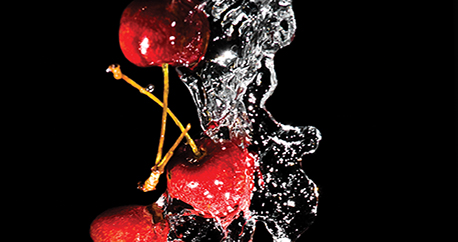The U.S. cherry industry’s greatest success—lengthening the season and increasing volume—is also one of its biggest challenges. Cherries remain one of the few truly seasonal products in the fresh produce section, and therein lies the rub: despite the limited timeframe, shippers work very hard to attract, and more importantly retain, customers during the all-too-brief season.
“We need consumers to come back and repurchase cherries,” states Jon Bailey, who manages Oregon cherry shipments for The Oppenheimer Group, headquartered in Vancouver, British Columbia. “If they get a bad cherry early in the season, we may not see them again until Bings come in.”
The earliest cherries come out of Southern California in late spring (mid-April) and the season can extend to the end of August with Bing harvests in Washington’s higher elevations. With such a short window for harvesting and shipping, quality is paramount.
Challenges: Old and New
Getting cherries from the orchard to store shelves in peak form and flavor has never been easy. Fortunately, new equipment is speeding up the process of sorting cherries. Originally used with Washington’s premium yellow cherry variety, Rainier, optical laser sorters are helping growers throughout the Pacific Coast.
“We used to call optical sorters ‘Rainier packing equipment’—now we’re treating red fruit like Rainiers,” comments Scott Brown of Morada Produce Company L.P. in Linden, CA. The technology has proven a welcome addition to packinghouses; Brown says an optical sorting line can pack 20 tons of cherries per hour.
While optical sorters vastly improve pack quality, it’s impossible to eliminate all variability. “There are still things inside a cherry,” concedes Steve Lutz, vice president for marketing at Columbia Marketing International, Inc. in Wenatchee, WA, “that even today’s best technology can’t detect.” This, in turn, leads to another ongoing industry challenge: food safety.
The implementation of several Food Safety Modernization Act rules this year will certainly impact Northwest grower-shippers, wholesalers, and importers. Bailey believes some of the older or smaller orchards could decide to exit production because of the changes and additional paperwork.
Other struggles include labor, water, and the El Nino-influenced weather. High-tech equipment can help with labor shortages, but skilled workers are still needed during harvest and packing. California raised its state minimum wage again, which either helps or hinders produce companies, depending on your point of view. Wages are certainly part of the equation, but the dearth of workers remains a thorny issue for grower-shippers.
Water is also top of mind, with the current El Nino weather pattern lending a hand. “We had a positive winter, but it’s going to take three steady years of rain to bring the water supply back up,” states Paul Poutre, general manager of Delta Packing Company of Lodi, Inc.
Temperature is an issue as well for perfect cherries: too few winter chill hours can delay trees from coming out of dormancy and budding. Late winter temperatures, below 20°F at bud break, can wreck a crop. Spring temperatures in the high 70s, or prolonged exposure to temperatures below the mid-50s, can hamper cherry bloom. “When you have erratic weather in the winter, we need to do everything possible in the packing sheds to maintain quality,” asserts Morada’s Brown.
Kicking Off the Season: California
Good weather boosted California’s cherry harvests back up in 2015 after dismal production in 2014. Last year’s 68,000 tons was a welcome increase after too few winter chill hours resulted in a 40,000-ton harvest in 2014. Dick Reiman, a 29-year cherry veteran and president of River City Produce Sales in Sacramento, lauded 2015 as “one of the better years for the California cherry deal.”



